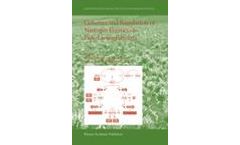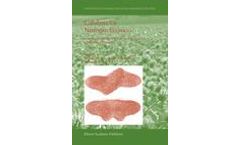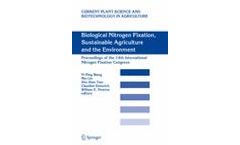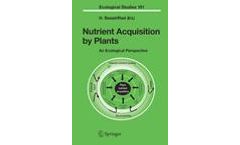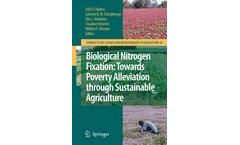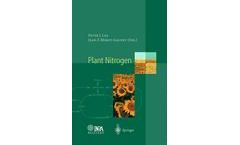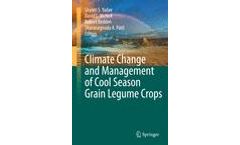nitrogen-fixation books
20 books found
This book provides a comprehensive and detailed source of information on the genetic and regulatory aspects of biological nitrogen fixation in free-living (non-symbiotic) prokaryotes. Biological nitrogen fixation is represented in a diverse range of microorganisms, among which Klebsiella pneumoniae serves as a paradigm for the ...
Biological nitrogen fixation provides more than 50% of the total annual input of the essential element nitrogen to world agriculture. ...
Incorporating contributions from microbiologists, molecular biologists, plant breeders and soil scientists this volume reports the results and recommendations of an FAO/IAEA meeting of twelve experts on biological nitrogen fixation. This volume will be invaluable to scientists working on nitrogen fixation, soil microbiology, ...
In the 100 years since the legume-Rhizobium symbiotic nitrogen fixation interaction was first described, interest in this field has grown rapidly. The types of studies have been cyclical in nature, involving a cross-section of disciplines. The availability of cheap nitrogenous fertilizers caused much of the biological ...
This book is written with the objective of covering the basic issues in Biological Nitrogen Fixation (BNF), such as physiology, biochemistry and molecular genetics of nitrogen ...
This volume covers all aspects of fundamental and applied nitrogen-fixation research, extending from biochemistry and chemistry through genetics, regulation and physiology to agricultural practice and environmental impact. It describes recent progress on studies of potential catalysts for nitrogen fixation; how the N2-fixing ...
Diazotrophic bacteria convert atmospheric nitrogen to plant-useable form and this input of nitrogen through biological fixation is of great agronomic importance. The contributions presented in this volume relate to free-living nitrogen fixers and the diazotrophs associated with plants. Symbiotic association of Frankia with ...
The following key topics are covered: soil nutrient bioavailability; root responses to variations in nutrient supply; nitrogen fixation; regulation of ...
This volume covers recent developments in both fundamental and applied research in biological nitrogen fixation. It emphasizes the application of biological nitrogen fixation for sustainable agriculture, which should lead to poverty alleviation, environmental protection, and good agricultural practices generally. ...
They are a key component of sustainable agricultural systems because of symbiotic nitrogen fixation and other beneficial symbiosis with mycorrhizal fungi. ...
This book is the self-contained fourth volume of a seven-volume comprehensive series on nitrogen fixation. The outstanding aspect of this book is the integration of basic and applied work on biological nitrogen fixation in the fields of agriculture, forestry, and ecology in general. ...
The global cycle of nitrogen has been altered by human activity to a greater extent than that of any other element. The production of nitrogen fertilizer, cultivation of legumes, and incidental nitrogen fixation in internal combustion engines together transfer more nitrogen from the atmosphere into ...
New frontiers of science offer exciting opportunities to stretch rice research horizons. Recent advances in understanding symbiotic Rhizobium-legume interactions at the molecular level, the discovery of endophytic interactions of nitrogen-fixing organisms with non-legumes and the ability to introduce new genes into rice through transformation have created an excellent opportunity to ...
Chemical fertilizers have had a significant impact on food production in the recent past, and are today an indispensable part of modern agriculture. On the other hand, the oil crisis of the 1970s and the current Middle East problems are constant reminders of the vulnerability of our fossil fuel dependent agriculture. There are vast areas of the developing world where N fertilizers are ...
The subsistence agriculture of the pre-chemical era efficiently sustained the nitrogen status of soils by maintaining a balance between N loss and N gain from biological nitrogen fixation (BNF): the microbial conversion of atmospheric N to a form usable by plants. ...
Jointly published with INRA, Paris.This book covers all aspects of the transfer of nitrogen from the soil and air to a final resting place in the seed protein of a crop plant. It describes the physiological and molecular mechanisms of ammonium and nitrate transport and assimilation, including symbiotic nitrogen fixation by the Rhizobiacea. Amino ...
This new series will cover all aspects of research on plant-microbe interactions, including beneficial plant symbioses such as symbiotic nitrogen fixation, plant pathology, plant genetics, molecular biology, agronomy, ecology, and phytochemistry. ...
This book covers all aspect of legume production management technologies, plant ecological response, nutrients management, biological nitrogen fixation, molecular approaches, potential cultivars, biodiversity management under climate change. ...
Nitrogen is the most limiting element for crop production. Traditionally, expensive commercial fertilizers are used to correct soil nitrogen deficiencies. Indeed, 50% of the increase in rice yields after World War II can be attributed to increased fertilizer nitrogen use. Although an increased rate of fertilizer nitrogen application has been advocated to meet the growing demand for food, it ...

